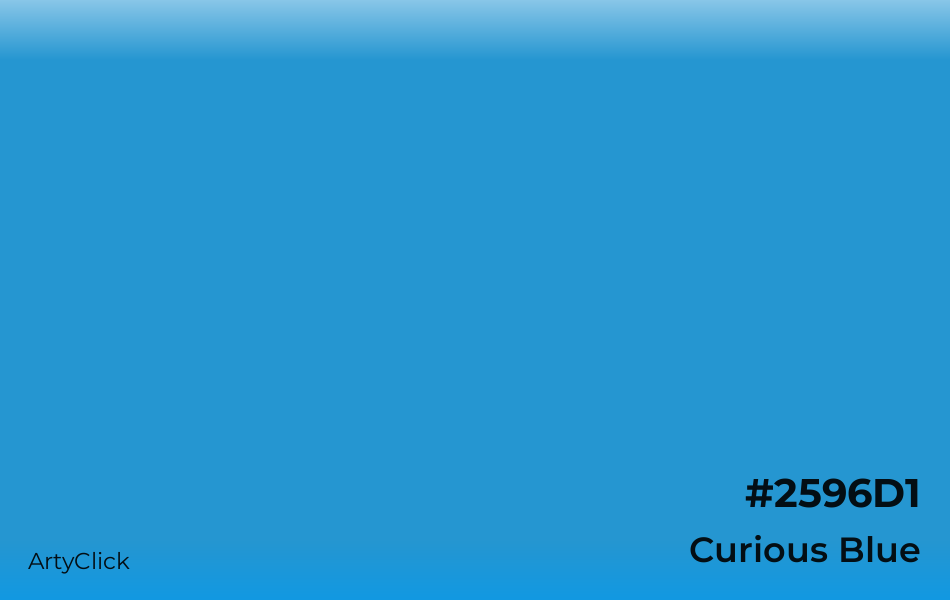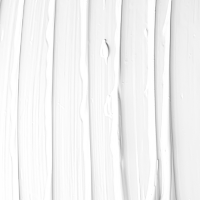Curious Blue
#2596D1

Shades of Curious Blue
Tints of Curious Blue
Tones of Curious Blue
What color is Curious Blue
Curious Blue is a light bright shade of Sky Blue. It belongs to the color family Sky Blue, and it has high lightness and high saturation. Curious Blue is a cool color.
What are the HEX, RGB, HSV, HSL and CMYK color codes of Curious Blue
RGB space
CMYK space
The hex code for Curious Blue is #2596D1.
In the RGB (Red, Green, Blue) color space, which is used for digital colors, Curious Blue has 15%% Red, 59% Green, and 82% Blue.
Curious Blue has 201° Hue, 82% Saturation, and 82% Value in the HSV (Hue, Saturation, Value) color space, which is another way to represent digital colors.
Curious Blue has 201° Hue, 70% Saturation, and 48% Lightness in the HSL (Hue, Saturation, Lightness) color space, which is a different way to express digital colors.
Curious Blue has 82% cyan, 28% magenta, 0% yellow, and 18% black in the CMYK (Cyan, Magenta, Yellow, Black) color space, which is used for color printing.
Color Space |
Original Units |
Percentage |
|---|---|---|
Hex |
#2596D1 |
|
RGB |
(37, 150, 209) |
(15%, 59%, 82%) |
HSV |
(201°, 82, 82) |
(56%, 82%, 82%) |
HSL |
(201°, 70, 48) |
(56%, 70%, 48%) |
CMYK |
(82, 28, 0, 18) |
(82%, 28%, 0%, 18%) |
How does Curious Blue contrast with black and white
The natural luminance of Curious Blue is 27%, which is low.
Curious Blue has a higher contrast with black than white.
Curious Blue and black have a 6.4:1 contrast ratio, which meets the AA requirement. These colors are suitable for titles.
Curious Blue and white have a 3.3:1 contrast ratio, which is insufficient for readability.
Luminance |
Contrast to Black |
Contrast to White |
|---|---|---|
27% |
AA (6.4) |
insufficient (3.3) |
Example Black |
Example White |
Example Black |
Example White |
What colors go with Curious Blue
How to mix Curious Blue paint

To mix Curious Blue paint using eight primary colors (Red, Green, Blue, Cyan, Magenta, Yellow, White, and Black), you'll need to combine 34% Blue, 33% Cyan, 18% Black, 15% White, as shown below.

Yellow
0%

Red
0%

Green
0%

Blue
34%

Cyan
33%

Magenta
0%

Black
18%

White
15%
To mix Curious Blue paint using five primary colors (Cyan, Magenta, Yellow, White, and Black), you'll need to combine 50% Cyan, 17% Magenta, 18% Black, 15% White, as shown below.

Cyan
50%

Magenta
17%

Yellow
0%

Black
18%

White
15%
What colors are similar to Curious Blue
Colors similar to Curious Blue are: Blue Ivy, Bleu De France, Glacial Blue Ice, Rich Electric Blue, and Water Blue. Blue Ivy is paler and darker than Curious Blue. Bleu De France is more blue and paler than Curious Blue. Glacial Blue Ice is paler and darker than Curious Blue. Rich Electric Blue is brighter than Curious Blue. Water Blue is brighter and darker than Curious Blue.